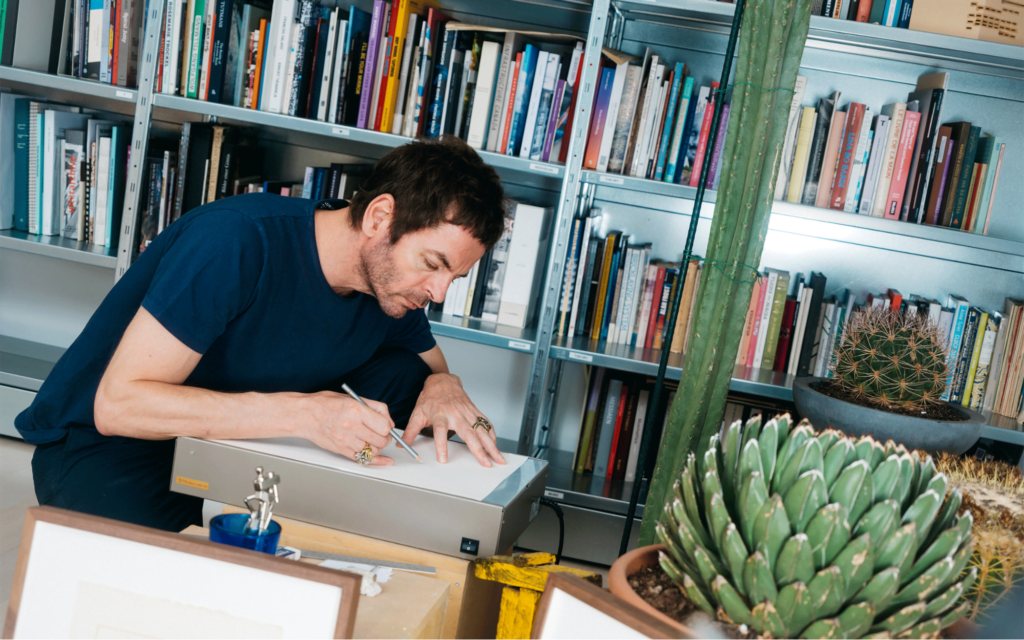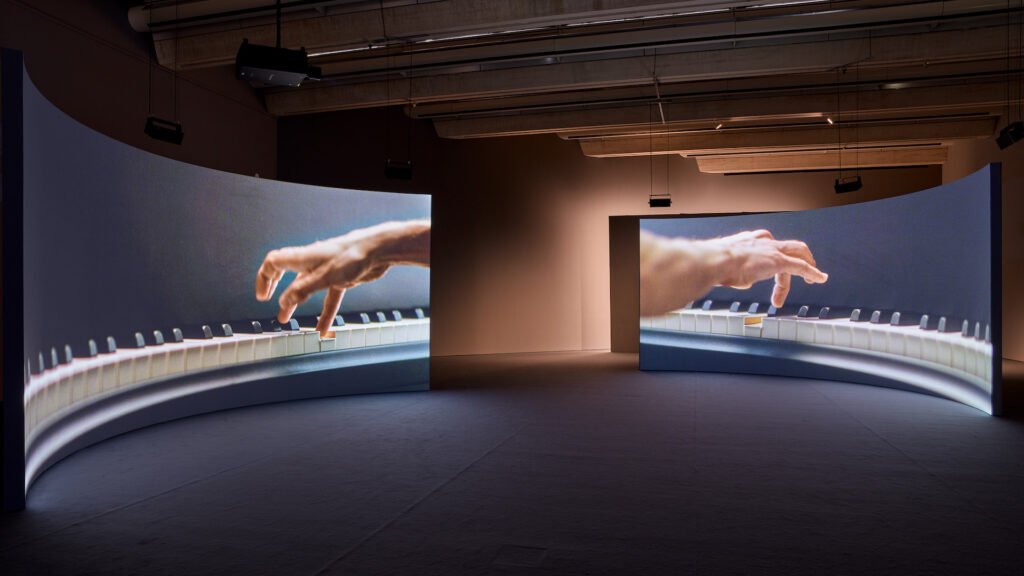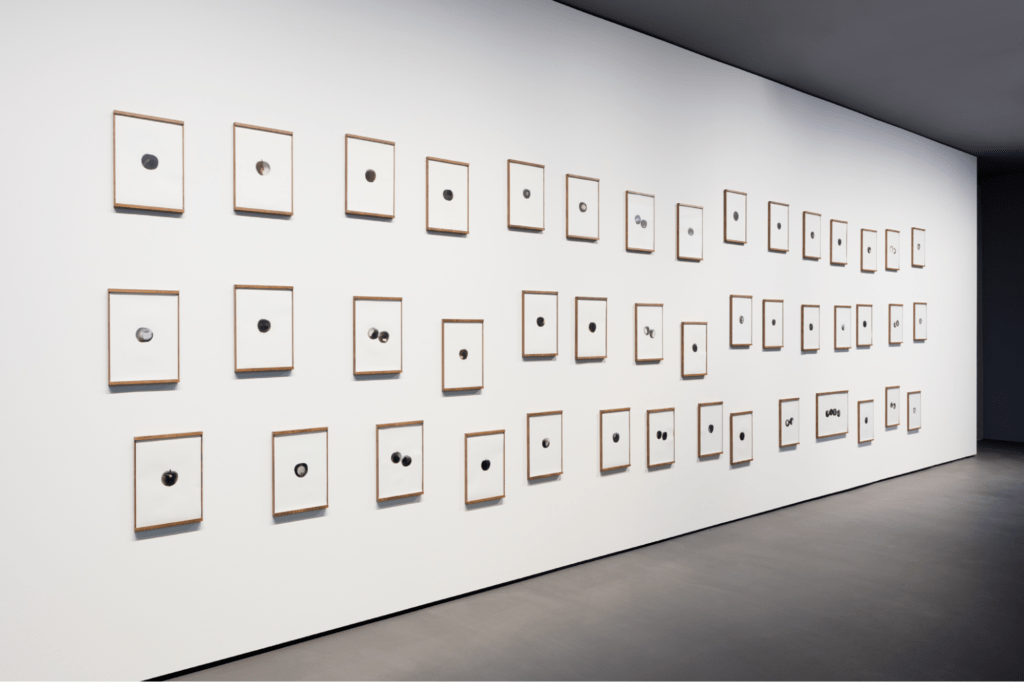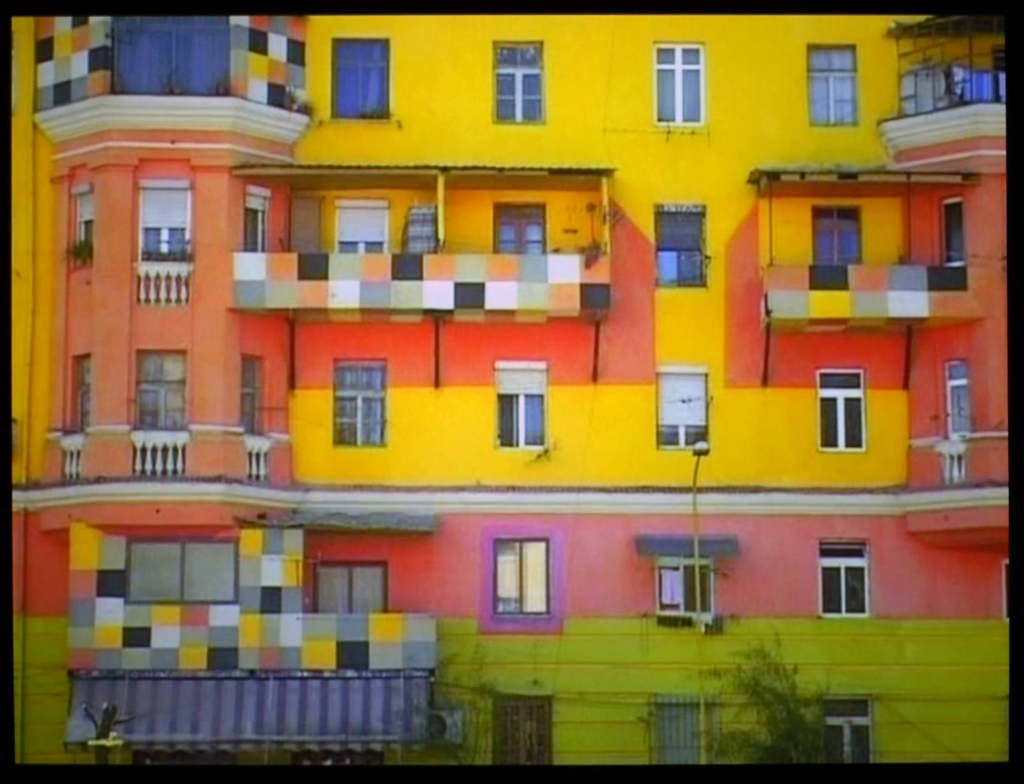Anri Sala BIOGRAPHY

Early Life and Education: Anri Sala’s Beginnings in Albania
Anri Sala was born in Tirana, Albania, in 1974. He grew up under the isolated communist regime of Enver Hoxha, where access to information from the outside world was severely restricted.
Early Artistic Influences
Sala’s first encounters with avant-garde art came through banned books and tapes smuggled into the country. He studied at the Academy of Arts in Tirana, focusing on painting. After the fall of communism in 1992, Sala was exposed to contemporary art and began experimenting with video and film.
Education and Early Career
In 1996, Sala moved to Paris to attend the École Nationale Supérieure des Beaux-Arts, where he changed his concentration to film and video art. His early films explored the political and social issues of post-communist Albania. Sala held his first solo show in France in 1999, gaining recognition for his distinctive style.
What is Anri Sala known for?

Sala is known for pushing the boundaries of film as an artistic medium. His films often have minimal dialog and plot, focusing instead on visuals, sound, and images’ poetic or metaphorical potential. Sala’s works also frequently incorporate looped or slowed footage, distorting the viewer’s sense of time.
Throughout his career, Sala has pushed the boundaries of film as an artistic medium. His movies are highly conceptual, incorporating sculpture, architecture, sound, and performance elements. His films have been lauded for transforming familiar spaces and reimagining the relationship between the viewer and the viewed. Anri Sala is an artist who continues to challenge preconceptions about the nature of film and visual art.
Career highlights

Artistic Influences and Style: Blurring the Lines between Film and Visual Art
Sala was exposed to various art forms early, growing up in Tirana, Albania. His mother was an actress, and his father worked in the film industry, telling him to use mediums beyond the traditional.
Sala’s films are not straightforward narratives but poetic, open-ended meditations that leave room for interpretation. His works incorporate long takes, subtle camera movements, and dynamic soundscapes. Sala often plays with time or manipulates footage to create a sense of ambiguity, referring to his works as “films” but presenting them as art installations.
Who Inspired Anri Sala?
Sala studied painting at the Academy of Arts in Tirana before moving to France to learn video art. There, he was inspired by conceptual artists like Bruce Nauman and Nam June Paik, who pushed the boundaries of film and questioned the relationship between the audience and the work.
Sala’s films also frequently incorporate reflections on cultural memory and identity.
“Intervista” (Finding the Words) | 1998 | These works explore the relationship between personal and collective history in Albania. By fusing film, video, and installation, Sala’s works evoke a sense of intimacy, immediacy, and introspection, inviting the viewer into a reflective space. |
“Le dernier des hommes” (The Last of the Line) | 2003 |
Through his innovative and thought-provoking work, Anri Sala has challenged and expanded the possibilities of film as an art form. By presenting his films as immersive installations, Sala has created a new hybrid art form that provides a multi-sensory experience, blurring the line between cinema and visual art.
Anri Sala List of Work

Notable Projects
Anri Sala’s films push the boundaries of cinema as an art form through their innovative use of sound and visuals. His work unconventionally explores complex ideas around time, memory, and human experiences.
Some glimpses of his famous works are:
2003 | Time After Time | Sala slows down and loops a clip of a man falling from a horse, transforming a brief moment into an endless loop and eternity. Sala’s manipulation of time aims to make viewers more aware of each passing moment. |
2005 | Long Sorrow | It follows a woman wandering through an empty museum at night. The film’s long takes and minimal cuts allow the viewer to explore the space and the protagonist intimately. |
2010 | Le Clash | It depicts young men riding motorcycles through the open Albanian countryside, celebrating freedom of movement through space. |
1998 | Intervista | Sala layers and manipulates found footage and audio recordings of his mother speaking about her childhood in Tirana. The film’s fragmented, impressionistic style rejects linear storytelling in favor of a more poetic form. |
2014 | Present Tense | The movie explores how we construct meaning from fragments of sound and images. Like human memory, the film is impressionistic, elliptical, and open to interpretation. |
Notable Exhibitions
2002 | “Intervista” | Sala’s first solo exhibition was held at the Serpentine Gallery in London. The show included Sala’s early video works like “Vortex” and “Dammi i Colori.” The Serpentine exhibition brought Sala widespread critical acclaim and recognition. |
2007 | Venice Biennale | Sala represented France at the Venice Biennale, showcasing his film “Le Clash.” The work explored themes of memory and loss through footage of a demolition derby in Paris. |
2012 | Kassel, Germany | Sala was included in the Documenta exhibition in Kassel, Germany. His “The Last Resort” project transformed a dilapidated hotel into an immersive art environment. Viewers wandered through the hotel while ambient music and sounds from Sala’s films played in the background. |
Sala has had major solo exhibitions at museums such as:
New Museum in New York
Museum of Contemporary Art in Chicago
Garage Museum of Contemporary Art in Moscow
His films are also frequently screened at festivals like Cannes, Venice, and Berlin. While Sala’s early works were often politically charged or explored societal issues, his recent films have taken on more poetic and philosophical themes related to time, memory, and human relationships.
Legacy and Impact: Pushing the Boundaries of Film as an Art Form
Sala’s films frequently grapple with themes of time, memory, loss, and human experiences. Intervista represents Sala’s mother’s attempt to revisit and preserve her fading memories of childhood. Long Sorrow captures the mundane yet poignant experience of confronting the passage of time in a changing cityscape.
Sala’s innovative films push the boundaries of cinematic expression through their poetic use of sound and visuals. His work provokes reflections on time, memory, loss, and human experiences in ways that expand our understanding of what film can be. Sala’s unconventional, thought-provoking body of work establishes him as an artist who has significantly impacted contemporary film and video art.
Follow Anri Sala on social media
LinkedIn: https://de.linkedin.com/in/cl%C3%A9mence-duchon-6272b13
